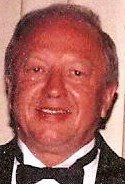...the “wall of separation” then erected wasn’t between government and religion, but between the federal government and the states. This was the point Thomas Jefferson would make in 1802 in his letter to the Danbury Baptists, saying that via the First Amendment the American people had prevented “their legislature”—Congress—from interfering in matters of religion. He re-emphasized this point in his second inaugural address, saying that he had left religion “to the discipline of state” or religious societies and in 1808, asserting that as no power over religion had been given the “general government” it “must thus rest with the states” as far as any human authority could wield it.
It’s also worth noting that, even at the federal level, there was then no strict separation between government and religion as modern secularists define it. Witness the existence in Congress of tax-supported prayers, chaplains and Thanksgiving proclamations, practices that of course continue to this day.
Among the more ironic illustrations of the Founders’ views about these matters were the actions of the Congress that adopted what would be the First Amendment religion clauses. These were voted by the House of Representatives on Sept. 24, 1789. The very next day, the House approved a resolution of prayer and thanksgiving, acknowledging “the many signal favors of Almighty God” in helping establish their new political system, and requesting that President Washington issue a proclamation to this effect, which he proceeded to do forthwith (the origin of our present Thanksgiving holiday).
In sum, liberal teachings on this subject are a farrago of ignorance, bias and disinformation. Christine O’Donnell, by contrast, knows whereof she speaks, whereas her opponents all too clearly don’t.
Subscribe to:
Post Comments (Atom)

No comments:
Post a Comment